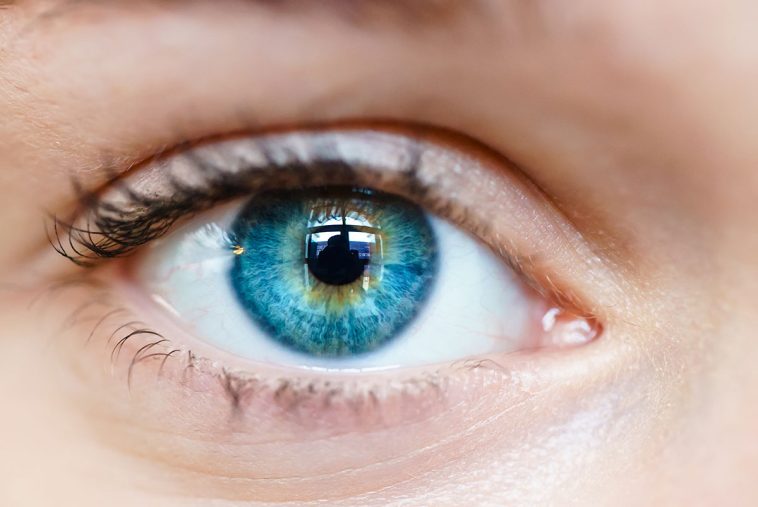- 102shares
While there’s still a lot of research to be done on eye exercises, most studies show that they do improve your vision. They do this by stretching and strengthening the tiny muscles in your eyes – the ciliary muscles – which help maintain optical clarity for viewing objects.
However, eye exercises can’t correct underlying conditions such as astigmatism, glaucoma, or diabetic retinopathy.
Your vision is a complex system that’s affected by both physical and environmental factors. Although corrective lenses can help improve things, making room for eye exercises and vision therapy can lead to better eye health.
What Are the Benefits of Eye Exercises?
Eye Exercises have proven to be scientifically effective in the following areas:
- Reduced strain on the eyes after long periods on screens or reading.
- Improved coordination by stretching and strengthening the ciliary and extraocular muscles.
- Increased blinking rate which boosts the circulation of oxygen and nutrients to the eye, thereby reducing the risk of dry, irritated eyes.
- Improved peripheral vision for people who have advanced diminishing visual fields due to aging or macular degeneration.
For all their benefits, eye exercises do not remedy many of the issues that require corrective lenses. These include:
- Macular degeneration: A progressive eye disease that gradually damages the macula – the small, central region on the retina that provides sharp, straight-ahead vision.
- Farsightedness: As a result of your eyeball being too long, light rays converge behind the retina rather than directly on it, blurring objects that are up close.
- Nearsightedness: As a result of your eyeball being too short, light rays do not reach your retina but rather converge in front of it, making it difficult to focus on objects that are far away.
- Astigmatism: When your cornea isn’t evenly rounded, light rays hitting your eyes refract in two different directions, resulting in optical distortion.
- Glaucoma: Agroup of eye diseases that result from damage to the optic nerve, which transmits information from the retina to the brain.
- Presbyopia: The lenses in your eyes can’t adjust enough to bring things that are up close into sharp, clear focus.
How to Exercise Your Eyes
The 20-20-20 Rule
One of the most common complaints patients have regarding their eye health is eye strain, caused by prolonged periods of focusing on objects up close.
This kind of eyestrain can make it very uncomfortable or impossible to type, drive, read books or watch TV. The 20-20-20 rule is a popular correction technique that can remedy the problem.
This rule suggests that every 20 minutes, you should take a break and look at something 20 feet away for 20 seconds.
The theory behind the rule is that the focusing muscles in your eyes work harder when glued to a single close-up object. Therefore, occasionally focusing on an object that’s far away can ease eye strain.
Figure 8
The Figure 8 eye exercise is a great way to improve the flexibility of your eyes. Here’s how it works:
- Pick a spot on a blank wall or floor around 10 feet away.
- Imagine a large figure 8 at that spot. Now, trace this path with your eyes without moving your head for one minute, then switch directions for another minute.
Palming
Palming is a great eye relaxation technique recommended by optometrists around the world.
Follow these instructions:
- Sit in a chair with your back straight and close your eyes.
- Place your hands over your eyes, making sure that your palms cover the eye area, and your fingers rest on your forehead. Do this for at least one minute.
While palming, avoid putting too much pressure on the eyeballs as they need to be able to blink freely without obstruction or discomfort.
Vision Therapy
Visual therapy is a type of optometric rehabilitation therapy in which a trained therapist strives to improve binocular vision and ocular coordination using specific eye exercises and/or glasses.
Vision therapy helps with common problems caused by eye muscle and muscle tissue problems, such as nearsightedness, farsightedness, astigmatism, double vision, strabismus, lazy eye, and crossed eyes.
Therapy includes exercising the eye muscles under controlled conditions until they are strengthened enough to function properly on their own.
It’s Never Too Late!
Eye exercises can improve your vision, but they aren’t a cure for all eye conditions.
If you’re having trouble seeing, make an appointment with an eye care professional first. They can determine whether corrective lenses or other treatments could help before you start performing eye exercises on your own.
,

